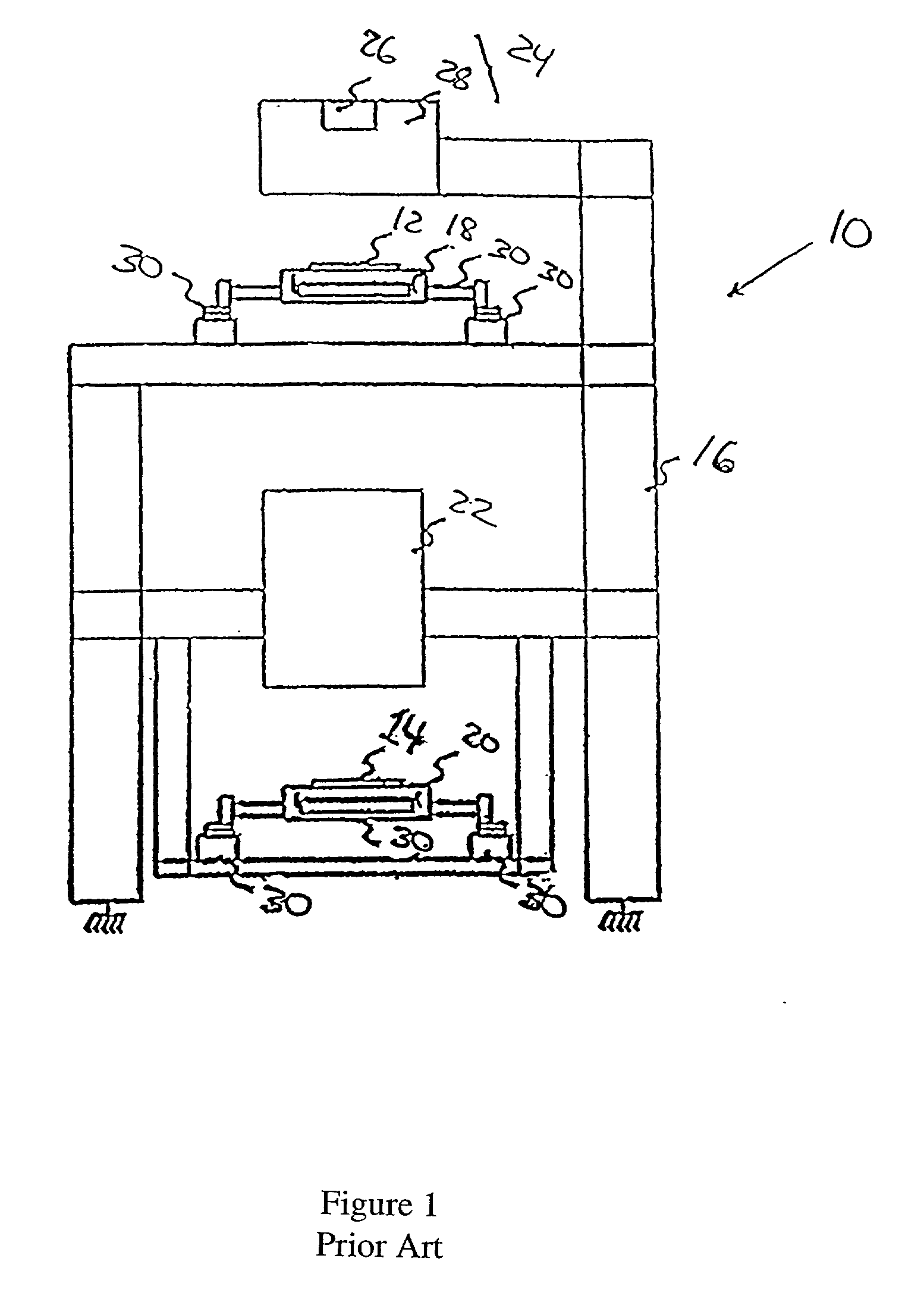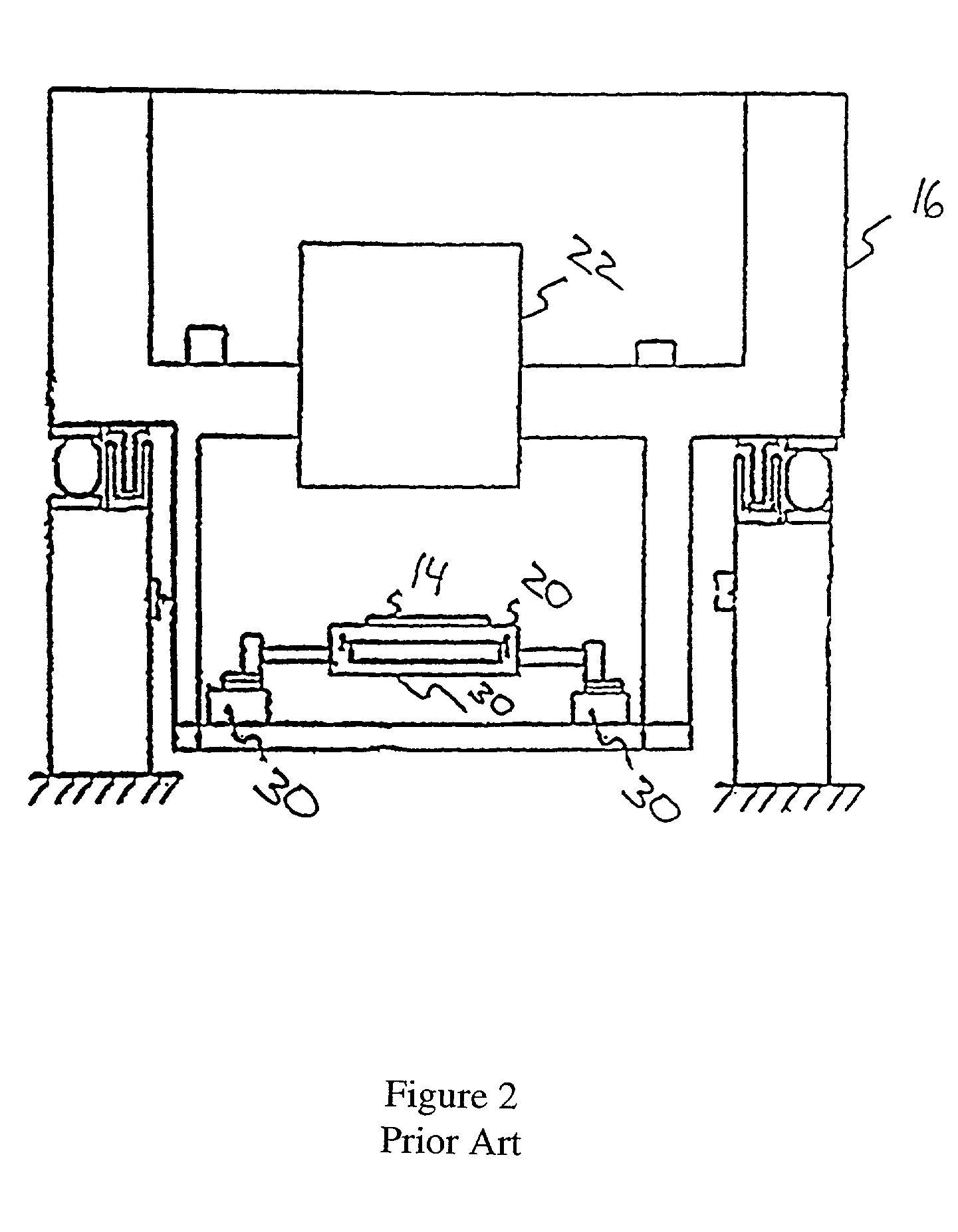Two stage method
a technology of lithography and two stages, applied in the field of lithography instruments, can solve the problems of complexity creating time requirements of its own, distortion of the reticle, and distortion of the image focused on the substra
- Summary
- Abstract
- Description
- Claims
- Application Information
AI Technical Summary
Benefits of technology
Problems solved by technology
Method used
Image
Examples
Embodiment Construction
[0020] Referring now to FIG. 3, in which dual wafer stage assembly 40 is illustrated from above according to a preferred embodiment of the invention. Two wafer stage assembly 40 provides the capability for the system to rely on interferometers 46, 48, 50, 52, 54, 56 and encoders 55 and 57 to determine the position of wafer stages 42 and 44 during processing. Dual wafer stage assembly 40 generally comprises a first wafer stage 42, a second wafer stage 44, a base 60, and the interferometers and encoders mentioned above. Each interferometer cooperates with a reflective surface (mirror) 58, 62, 64, 66, 68, and 70 mounted on stages 42 and 44 so that they reflect back to the intended interferometers. Elements of base 60 necessary for the support, positioning, and movement of wafer stages 42 and 44 are illustrated as support elements 30 in FIG. 3 for purposes of clarity, but, as one of skill in the art would recognize, these functions may be accomplished by the shaft-type linear motors 51 ...
PUM
 Login to View More
Login to View More Abstract
Description
Claims
Application Information
 Login to View More
Login to View More - R&D
- Intellectual Property
- Life Sciences
- Materials
- Tech Scout
- Unparalleled Data Quality
- Higher Quality Content
- 60% Fewer Hallucinations
Browse by: Latest US Patents, China's latest patents, Technical Efficacy Thesaurus, Application Domain, Technology Topic, Popular Technical Reports.
© 2025 PatSnap. All rights reserved.Legal|Privacy policy|Modern Slavery Act Transparency Statement|Sitemap|About US| Contact US: help@patsnap.com



